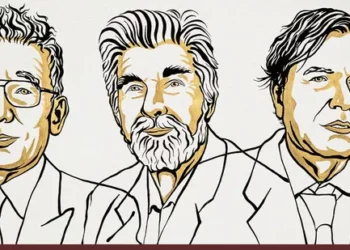Has it already been a year? It’s Nobel Prize season once again, and the first award has been given in “Physiology or Medicine“. James E Rothman, Randy W Schekman and Thomas C Südhof took the prize for their work on the mechanism that controls the transport of membrane-bound parcels or ‘vesicles’ through cells.

The American trio solved one of medicine’s biggest mysteries – how a cell transports crucial cargo—such as hormones—to the right place at the right time.
“The significance of the work [relates to] how cells talk to each other,” said Mike Cousin, a biologist at the University of Edinburgh in Scotland. “This discovery has underpinned a lot of cell-biology research over the past 20 years.”
Besides the tremendous scientific value of their research, the practical value is also huge; any disturbance in this transport mechanism can cause a range of ailments, from neurological diseases to diabetes and even immune disorders. For example, certain bacteria mess up the transport machinery and cause tetanus, a disease that kills thousands of newborns each year. A similar thing happens in many cases of schizophrenia. Several labs are now working on this transport mechanism in an attempt to find treatments for such maladies – all thanks to the three researchers work.
Dr. Schekman came up with the idea of studying the problem in yeast; many researchers frowned upon this idea, believing that findings on a single-celled creature couldn’t possibly apply to organisms as complicated as our own, and because they also thought yeast doesn’t have a complex excretion system. But Dr. Schekman persevered. He compared normal yeast cells to some in which he had disrupted the normal behavior, and was thus able to identify which genes are responsible the transport to different compartments and to the cell surface.
“It’s not intuitive, but when you cripple the process, you gain a lot of information” about how the transportation process works, said Dr. Schekman, at a press conference in Berkeley on Monday.
Meanwhile, through a series of ingenious experiments, discovered specific proteins on the vesicle membrane that fuse or “dock” with matching proteins, just as if they were two sides of a zipper – but why this happened was still unclear. Dr. Südhof discovered that when the vesicle’s molecular machinery senses calcium ions, it triggers the docking process – thus explaining how the magic happens.






